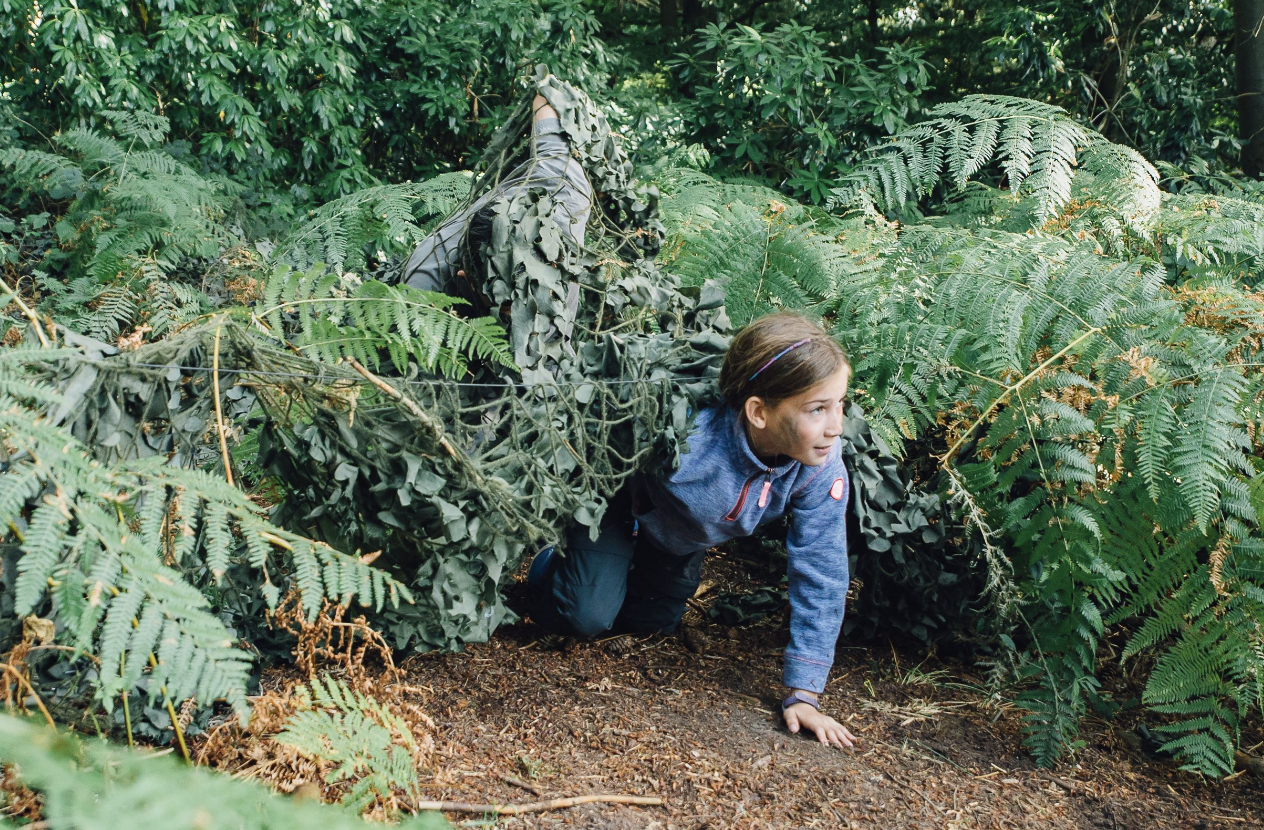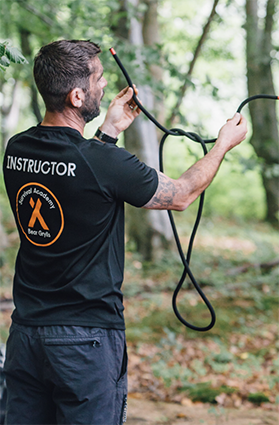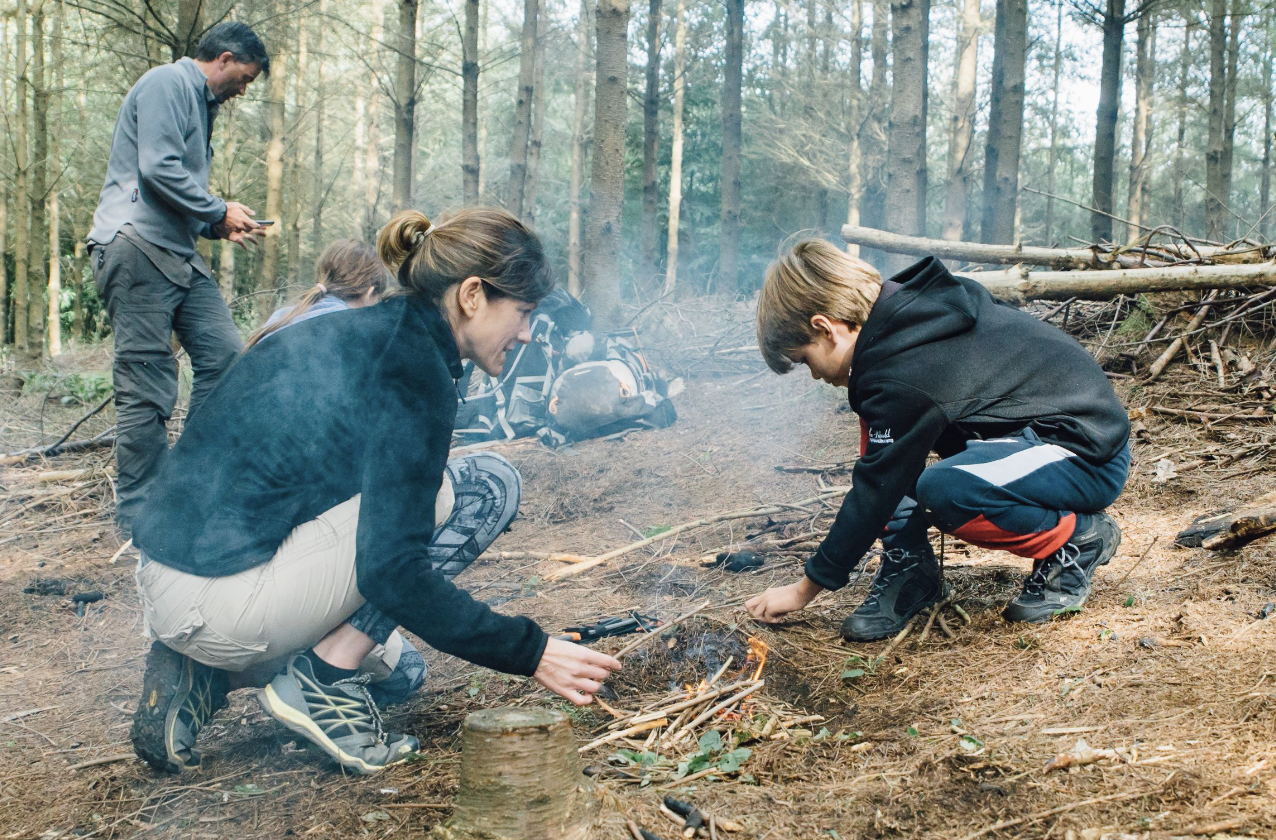Bear Grylls’ Survival Academy has created The Go Wild guide – developed with snack brand Nature Valley – with eight free ways to keep active kids satisfied this summer in their own home or the local park.
1. Try foraging for food
Fall in love with nature by foraging for herbs in your own garden, terrace, or kitchen, or look outside to try and find some wild plants growing! To get set up for foraging, you’ll need a basket and some gloves before heading out to your local park, field, wood, or nature reserve.
Any of these could be growing nearby:
• Purslane – also known as hogweed, purslane is a leafy green plant which can be used as an herb and salad vegetable. Will be in season mid-summer!
• Raspberries – wild raspberries can grow in hedgerows from mid-August and may be smaller than shop bought but are just as tasty!
• Blackberries – similar to raspberries but darker purpley-black in colour, these will also be ripe and ready for picking from midsummer
• Wild Garlic – although this may not be growing in the summer, it’s a good one to know as will be ready to pick and in season next Spring!
2. Get to know the skies
(Great for small children) – the clouds are full of all sorts of hidden animals; you just need to look carefully for them! To try your hand at zookeeper, pick a nice spot in the garden or the local park with a picnic and try spotting as many animal-shaped clouds as you can. Essential to take a notebook and pen or pencil so that you can draw them too.
If you’re waiting to learn a bit more about the clouds, they can also be used to try and predict the weather!
Simply look to the skies to identify these five formations:
• Cumulus: Detached clumps of cloud composed of water droplets that form low and indicate fair weather. Have flat bases and heaped tops and look a dazzling white in the sunshine.
• Altocumulus: Appears as rolls of cloud, or layered patches in the mid-level region. Commonly found between warm and cold fronts, so can precede bad weather.
• Cirrus: Detached, wispy clouds, formed of ice crystals. Wavy appearance is caused by wind movement. Can indicate a change in the weather. Also known as mares’ tails.
• Cirrocumulus: High patches of cloudlets made up of ice crystals that never cast self-shadows. Usually seen after rain, indicating improving weather.
• Cumulonimbus: Known as thunderclouds, these have low dark bases and extend many miles up into the atmosphere. Produce brief, heavy downpours, and sometimes lead to hail and lightning.
And you can also do this at night! Test your navigation skills by looking to the skies!
In the northern hemisphere, look for a distinctive winter constellation – Orion. He is easy to spot as there are 3 prominent stars more or less equal distance apart in a line and that is Orion’s belt. Under his belt there is 3 start that represent his sword. When the stars of Orion’s sword are vertical in the night sky, and you are facing him, you are facing South.
In the southern hemisphere, scan the skies for one of the brightest constellations – the Southern Cross (or ‘Crux’). This video illustrates how easy it is to find South…

3. Learn how to read and create maps
Prevent yourself from ever getting lost by mastering the art of Cartography and learning how to draw and make maps. This may help you map out your local nature spot or create a fun game where you can hide messages in the park for friends to find later on.
Today, most maps are printed on computers, but you can try making one the traditional way, by grabbing a compass and some paper and pens and getting outside. Start by carefully mapping and naming landmarks you see such as ponds, interesting or weird looking trees, and places where certain animals live. You can make a general map with physical landmarks or try out a thematic map with a specific theme to suit your friends.
4. Tell the time from the sun
Make a DIY sundial and compass to see where you are and the time!
Equipment:
• A long stick to use as the central shadow marker
• Some rocks to mark North, East, South, and West
• A watch, as a timer!
• Sunshine!
Instructions:
1. Place your stick in the ground and mark the end of the shadow with one rock
2. Wait 30 minutes and then mark the end of the shadow with the second rock
3. The first rock will be your West point, and the second East. Now mark North and South
4. There you go – you have a compass!
5. Make the ultimate den
A simple and fun thing to do in your back garden, on a picnic, when camping – or even in your bedroom – here’s a simple guide from the den making masters at BGSA on how to make the best den
Equipment:
• A sheet
• Two trees or structures at home that are safe to attach the sheet to
• Some rope
• Decorations of your choice
Instructions:
1. Select a suitable area between any two trees or points for your den
2. If outside, check for any loose branches then run the rope between the trees
3. Drape the sheet over the rope, and then weigh down each corner with a rock, log, or something heavy to hold it
4. Inside your structure, add blankets, leaves, or anything else to make the den cosy and fun inside!

6. Go incognito!
Try and make yourself invisible by learning the five s’s of effective camouflage.
When we’re in the wilderness and our survival relies on us remaining hidden and hard to find, there are five key aspects you need to ensure you’re addressing as you make your way to safety. Helpfully, they all begin with the letter S!
1. SHAPE
Find ways to break up your shape with foliage from your immediate surroundings so that the outline of a human figure is no longer obvious.
2. SHINE
Look carefully at your clothes and equipment to conceal any shine. This could be anything from your watch to the lace ringlets on your boots – use mud to cover everything you can (including your face and exposed skin) but don’t go overboard with the mud either as this in itself could also draw attention.
3. SMELL
Your smell will often betray you long before you’re seen or heard. To minimise exposure, eat all your food raw – if you can! – as the smell of cooked food (and your fire) will carry.
4. SHADOW
Where possible, do as much of your movement at night, where your shadow or silhouette will not expose you.
5. SOUND
All your movements should be slow and purposeful so as not to attract any unwanted attention. If you are moving with someone else, use hand signals instead of your voice to communicate
As long as you are mindful of the above five elements, you’re well on your way to making it to safety and having an incredible story to tell on the other side!
7. Learn the essential knots
Knot tying is an essential part of outdoor adventures, whether you’re building camp, tying your laces, or flying a kite!
Practise these three knots at home until you can master them:
A person holding a bow and arrow Description automatically generated
• Overhand Knot – this is the easiest one of all and is what our hands would automatically do if we were handed a piece of rope or string and told to put a knot in it. A key thing to know about this one, if you tie it around something, it can be undone easily. So, this one is primarily used as a ‘stopper knot’ – useful for stopping the end of a rope slipping through a hold or to stop the ends of a rope fraying.
• Bowline Knot – a BGSA favourite and used by adventurers worldwide, the bowline is made by a loop at the end of a rope which won’t slip or tighten.Also known as the ‘king of knots’, the Bowline is perfect for constructing a hammock at home, making dens, or setting up rope swings.
• Clove Hitch – this one’s a quick and memorable knot that can be used to attach a rope to a pole or a carabiner. Fun fact about the clove hitch, it’s one of the most commonly used knots by the Scouts!

8. Finally, test your knowledge with wild camping
Now that you’ve mastered these survival skills and a summer of challenges, finish off the holidays with a wild camping trip! Even if it’s just outside in your garden, it’s time to put what you’ve learnt into practice and get some experience as a true adventurer.

More info...
To further encourage get people out more, this year will see the return of Nature Valley’s partnership with the Gone Wild Festival with Bear Grylls in Powderham Castle, Devon from 25th to 28th August 2022. Gone Wild Festival with Bear Grylls is an action-packed family friendly festival for adults and children aged 6-18-years.







